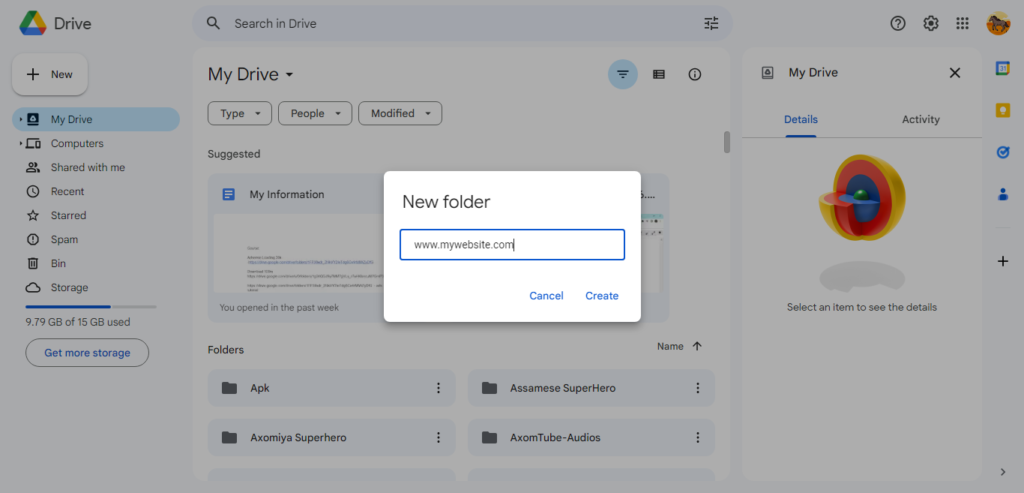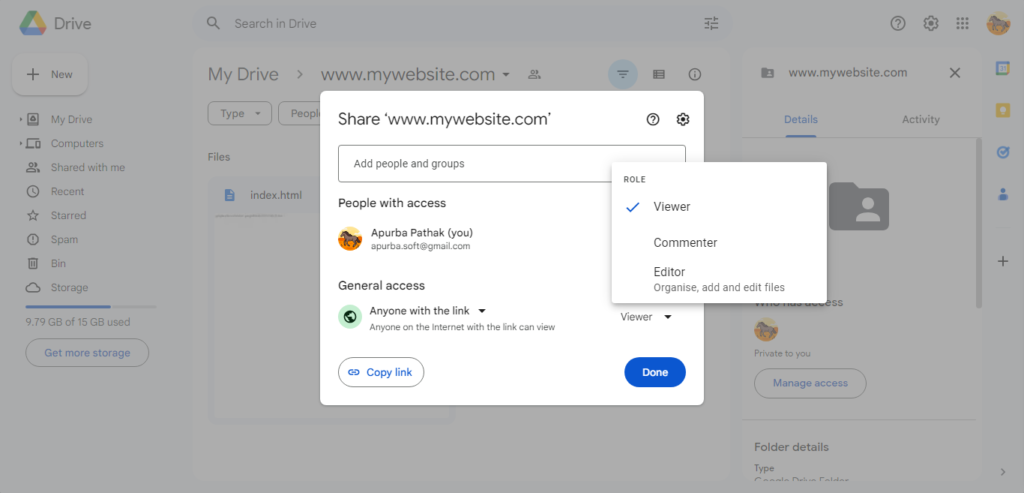Are you yearning to share your website with the world effortlessly? Your search ends here! Embrace the cost-effective brilliance of hosting your website on Google Drive.
In this exclusive guide, we shall unravel the secrets of easy website hosting, adorned with a touch of human emotion, making it a delightful journey for you.
Why Host on Google Drive?
Let’s begin by understanding why hosting your website on Google Drive is a great option:
- Cost-Effective: Google Drive offers free hosting, making it an attractive choice for individuals and small businesses with budget constraints.
- Easy Sharing: With Google Drive’s built-in sharing settings, you can effortlessly control who can access your website and collaborate with others.
- No Server Maintenance: Forget about managing servers and dealing with technical issues. Google takes care of the infrastructure for you.
- Quick Setup: Setting up your website on Google Drive can be done in just a few minutes, saving you time and effort.
Step 1: Create a Google Account (Skip if You Already Have One)
If you don’t have a Google account, head over to accounts.google.com and sign up.
Step 2: Go to Google Drive
Log in to your Google account and access Google Drive by visiting drive.google.com. It’s where the magic happens!
Step 3: Create a New Folder

In Google Drive, create a new folder where you’ll store all your website files. This folder will act as the container for your website.
Step 4: Upload Your Website Files

Now, it’s time to upload your website’s HTML, CSS, JavaScript, and other files into the folder you just created. Before proceeding, make sure your website works correctly on your local machine.
Step 5: Set Sharing Permissions

Right-click on the folder containing your website files and select “Share.” Choose the appropriate sharing settings – either make your website public or share it with specific individuals or groups.
Step 6: Get the Public Link
After setting the sharing permissions, you’ll receive a public link to your website folder. Copy this link; it will be the gateway to your website.
Your link looks like this: https://drive.google.com/drive/folders/1OITVkvCbadtl5up8yQUq1u0yMy-HcHx9?usp=sharing.
Step 7: Convert PHP Files to HTML (If Any)
Keep in mind that Google Drive doesn’t support PHP execution. If your website contains PHP files, convert them to HTML and update any internal links accordingly.
Step 8: Update Internal Links
Ensure all internal links within your HTML files are updated and functioning correctly. This ensures a smooth user experience when navigating your website.
Step 9: Access Your Website
Open the index.html file (or your main HTML file) in your browser to test your website.
Open the site and connect with google drive https://www.drv.tw after connecting do the essay changes, for more details, you can view https://www.drv.tw.
Step 10: Set Up Custom Domain (Optional)
If you prefer a custom domain for your website, you can purchase one from a domain registrar and forward it to your Google Drive public link. This step is optional but adds a professional touch to your site.
- Access the DNS setting for your domain (e.g., example.com).
- Add a CNAME record, setting your domain’s name (e.g., www) to point towards your desired target domain (e.g., 45mt8b6xwmygzg4jlm2ja.on.drv.tw).
- In your cloud drive’s root level, create the sacred folder with the exact name of your domain (e.g., www.example.com).
- Fill this sacred space with your cherished contents, and remember to name your entry point index.html.
- Allow the cosmic forces time to align, as it may take up to 72 hours for your DNS settings to become active.
- Once the alignment is complete, your custom domain shall come to life, unveiling its magic to the world.
Especially, I use Cloudflare to connect my custom domains.
Conclusion
Hosting your website on Google Drive can be a fantastic option for simple projects, personal websites, or temporary sharing.
Remember to regularly back up your website files and monitor your site’s performance and traffic for a seamless user experience.
FAQs
Can I host a complex website on Google Drive?
Google Drive is best suited for simple websites or projects. For complex websites with dynamic content and heavy traffic, consider traditional web hosting services.
Can I password-protect my hosted website on Google Drive?
Yes, you can set sharing permissions to limit access to specific individuals by requiring a Google account or a password.
Will my website have ads if I host it on Google Drive?
No, your website will not have any ads injected by Google Drive itself.
Can I use Google Analytics to track my web site traffic?
Yes, you can integrate Google Analytics with your website hosted on Google Drive to monitor its performance and traffic.
What happens if my Google Drive storage is full?
If your Google Drive storage is full, you won’t be able to upload additional files. Consider upgrading your storage or removing unnecessary files to make space.
Hosting your website on Google Drive offers a straightforward solution to sharing your content with the world. Embrace the simplicity, enjoy the cost-effectiveness, and watch your website become accessible to a wider audience. Happy hosting!

